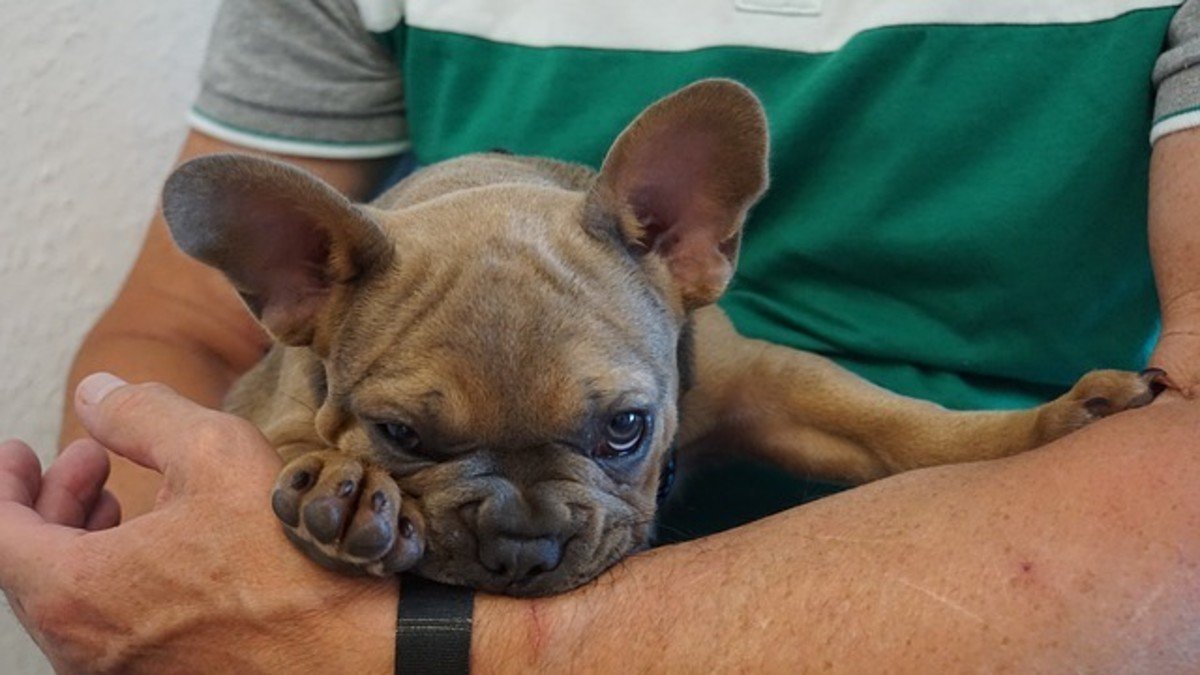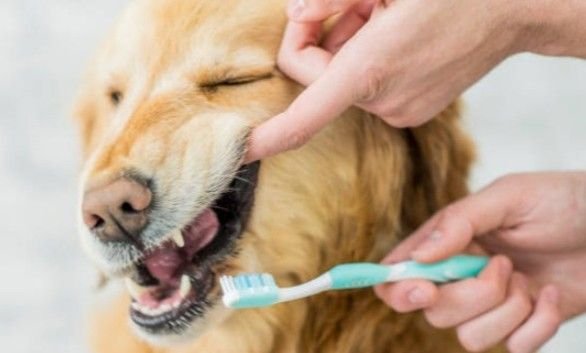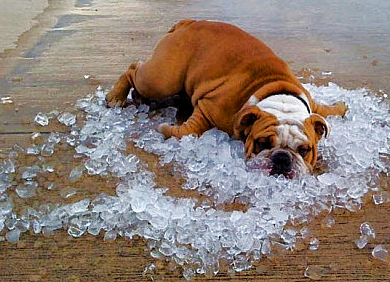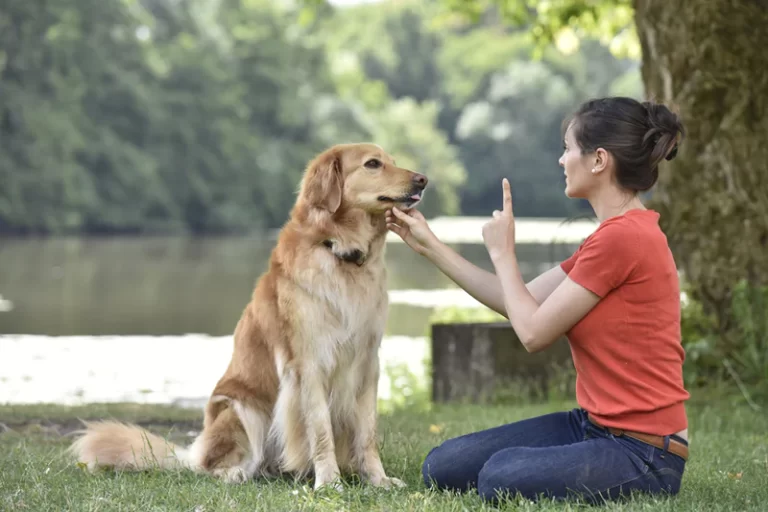Is It Normal If Your Dog Scratches You
Should you be worried if a dog scratches you?
If a dog scratches you, the level of concern depends on several factors, including the severity of the scratch, the dog’s vaccination status, and the circumstances surrounding the incident. Here are some guidelines to consider:
- Assess the Severity: Minor scratches from a dog that do not break the skin or cause any bleeding are generally not a cause for significant concern. However, deeper or more extensive scratches that result in broken skin or bleeding may require more attention.
- Wash the Wound: Regardless of the severity, it’s essential to clean the scratch with soap and water to reduce the risk of infection. Apply an antiseptic if available.
- Assess the Dog’s Vaccination Status: If the dog that scratched you is your own and is up-to-date on vaccinations, particularly the rabies vaccine, the risk of disease transmission is low. However, if the dog’s vaccination status is unknown or they are not up-to-date, there may be a slightly higher risk.
- Observe for Infection: Watch for signs of infection in the days following the scratch, such as redness, swelling, increased pain, or discharge from the wound. If you notice these signs, consult a healthcare professional.
- Consult a Doctor: If the scratch is deep, causes significant bleeding, or if you have concerns about the risk of infection, it’s a good idea to consult a healthcare professional. They can assess the wound, recommend treatment, and provide guidance on whether additional measures, such as a tetanus shot or antibiotics, are necessary.
- Dog Behavior: Consider the context of the dog’s behavior. If the scratch occurred due to aggression or a bite, it may be necessary to consult with a healthcare professional and report the incident to the appropriate authorities. Dog bites, especially from unfamiliar dogs or those with unknown vaccination status, can carry a higher risk of disease transmission.
In cases of a dog scratch, it’s always better to err on the side of caution and seek medical advice when you have any concerns about the wound. Prompt attention can help prevent complications, and it’s important to maintain good wound care to reduce the risk of infection. Additionally, if the dog that scratched you is not your own, it’s advisable to report the incident to the dog’s owner and local animal control if necessary, especially if aggressive behavior or an unvaccinated dog is involved.
What to do if a dog scratches you?
If a dog scratches you, it’s important to take prompt and appropriate action to minimize the risk of infection or complications. Here are steps to follow if you get scratched by a dog:
1. Wash the Wound:
- Clean the Wound: Use mild soap and warm water to clean the scratch thoroughly. Allow water to run over the wound for several minutes to help wash away bacteria.
2. Apply an Antiseptic:
- Use Antiseptic: Apply an antiseptic solution or hydrogen peroxide to the wound to help prevent infection. Avoid using alcohol, as it can be too harsh and may delay wound healing.
3. Control Bleeding:
- Apply Pressure: If the scratch is bleeding, apply gentle pressure with a clean cloth or sterile bandage to control bleeding. Elevate the affected area if possible.
4. Use an Antibiotic Ointment:
- Apply Antibiotic Ointment: After cleaning, apply an over-the-counter antibiotic ointment to the wound to further reduce the risk of infection.
5. Cover with a Bandage:
- Cover the Wound: Once cleaned and treated, cover the scratch with a sterile bandage or dressing to protect it from dirt and bacteria.
6. Monitor for Signs of Infection:
- Watch for Signs of Infection: Keep an eye on the wound for any signs of infection, such as redness, swelling, increased pain, or discharge. If infection is suspected, seek medical attention.
7. Seek Medical Attention:
- Medical Attention: If the scratch is deep, wide, or if you are unsure about the dog’s vaccination status, consult with a healthcare professional promptly. You may need a tetanus shot if your immunization is not up to date.
8. Identify the Dog:
- Identify the Dog: If the dog is not your own, try to obtain information about the dog’s vaccination status and owner contact information. Report the incident to the dog owner and local animal control if necessary.
9. Rabies Risk:
- Evaluate Rabies Risk: If the dog’s rabies vaccination status is unknown, consult with a healthcare professional. Rabies is a serious and potentially fatal disease, and prompt medical attention is crucial.
10. Report to Authorities:
- Report the Incident: If the scratch is from a stray or unknown dog, report the incident to local animal control or health authorities. They can help assess the risk of rabies and take appropriate measures.
It’s important to note that dog scratches, even seemingly minor ones, can carry a risk of infection. If you have any concerns about the scratch or if you experience signs of infection, consult with a healthcare professional for proper evaluation and treatment.
Is it necessary to take an injection after dog scratch?
Whether or not it is necessary to take an injection after a dog scratch depends on several factors, including the nature of the scratch, the dog’s vaccination status, and your own immunization history. Here are some key considerations:
- Vaccination Status of the Dog:
- If the dog that scratched you is known to be up-to-date on its rabies vaccination, the risk of rabies transmission is significantly reduced. Rabies vaccination is a key factor in determining the need for post-exposure prophylaxis (PEP).
- Your Immunization History:
- If you are already vaccinated against rabies and your vaccinations are up to date, your risk of rabies is lower. However, the need for medical evaluation and potential PEP would still depend on the specific circumstances of the scratch.
- Severity and Location of the Scratch:
- A deep or puncture wound is generally considered more concerning than a superficial scratch. Scratches on the face, head, or neck are considered higher risk due to the proximity to the nervous system.
- Unknown Dog or Stray:
- If the dog is unknown, a stray, or its rabies vaccination status cannot be confirmed, it is important to consult with a healthcare professional for an evaluation.
- Reporting the Incident:
- Report the incident to local animal control or health authorities. They can assist in determining the rabies risk and guide you on the necessary steps.
- Medical Evaluation:
- Seek medical attention promptly for a thorough evaluation of the scratch. The healthcare professional will assess the wound, inquire about the dog’s vaccination status, and consider your immunization history.
- Post-Exposure Prophylaxis (PEP):
- Based on the evaluation, a healthcare professional may recommend post-exposure prophylaxis (PEP) for rabies. PEP typically involves a series of rabies vaccinations and, in some cases, rabies immune globulin.
It’s important to emphasize that rabies is a serious and potentially fatal viral infection. If there is any doubt about the dog’s vaccination status, or if the scratch is severe or in a high-risk area, it is advisable to seek medical attention promptly. Rabies PEP is highly effective when administered soon after exposure but becomes less effective once symptoms appear.
Always follow the guidance of healthcare professionals and report the incident to relevant authorities for appropriate follow-up, including evaluating the dog’s health and vaccination status.
Why do dogs scratch at owners?
Dogs may scratch at their owners for various reasons, and the behavior can be influenced by a combination of factors, including their individual temperament, learned behaviors, and communication style. Here are some common reasons why dogs may scratch at their owners:
- Attention-Seeking:
- Dogs may scratch at their owners as a way to get attention. If they’ve received attention or positive interactions in the past when they scratched, they may learn that this behavior is effective in getting their owner’s focus.
- Affection and Bonding:
- Dogs often use physical contact, including scratching, as a way to express affection and strengthen the bond with their owners. It can be a way for them to solicit petting, belly rubs, or other forms of interaction.
- Communication:
- Dogs use various forms of communication, and scratching can be one way they express their needs or desires. It might be their way of saying, “Pay attention to me” or “I want something.”
- Playfulness:
- Some dogs may scratch as part of their playful behavior. If they’ve associated scratching with playtime, they may engage in this behavior when they’re in a playful mood.
- Excitement or Eagerness:
- Dogs may scratch when they’re excited or eager about something. This could be in anticipation of a walk, mealtime, or any activity that excites them.
- Sensory Exploration:
- Dogs use their paws to explore and interact with their environment. Scratching can be a way for them to investigate smells, textures, or objects around them.
- Attention to a Specific Area:
- If a dog is scratching at a specific area on their owner, it could be an attempt to draw attention to that area. This may be due to discomfort, an itch, or an underlying health issue.
- Learning from Reinforcement:
- Dogs learn through positive reinforcement. If a dog scratches and receives something rewarding, such as attention, treats, or play, they may be more likely to repeat the behavior.
Understanding the context and body language of your dog is important in interpreting why they may be scratching. If the behavior becomes excessive, unwanted, or if there are concerns about their well-being, it’s advisable to consult with a veterinarian or a professional dog trainer. They can help assess the specific circumstances and provide guidance on managing or modifying the behavior appropriately.
Is it OK if a vaccinated dog scratches you?
If a dog scratches you and the dog is up-to-date on its vaccinations, including rabies, the risk of contracting certain diseases is significantly reduced. Rabies is a primary concern in the context of dog scratches, and vaccination is highly effective in preventing the transmission of the rabies virus.
Here are key considerations:
- Rabies Vaccination:
- If the dog that scratched you is currently vaccinated against rabies, the risk of rabies transmission is minimal. Rabies is a deadly viral disease, and vaccination is crucial in preventing its spread.
- Observation Period:
- Even if the dog is vaccinated, it’s advisable to monitor the dog for any signs of illness or behavior changes. If the dog shows any unusual symptoms, consult with a veterinarian promptly.
- Wound Care:
- Properly clean and care for the scratch to reduce the risk of infection. Wash the wound with mild soap and water, apply an antiseptic, and cover it with a clean bandage.
- Medical Attention:
- Seek medical attention if the scratch is deep, puncture wounds are present, or if there are concerns about infection. Medical professionals can assess the wound and provide appropriate care.
- Rabies Risk Assessment:
- In situations involving unknown dogs, strays, or dogs with unknown vaccination status, it’s essential to consult with healthcare professionals to assess the risk of rabies and determine the need for post-exposure prophylaxis (PEP).
It’s important to note that while rabies is a significant concern, other bacterial infections can also result from dog scratches. Keeping the wound clean, monitoring for signs of infection, and seeking prompt medical attention if needed are important steps in managing a scratch.
If there is any doubt about the dog’s vaccination status or if you have concerns about the scratch, it’s advisable to consult with a healthcare professional promptly. They can assess the situation, provide appropriate medical care, and guide you on any necessary preventive measures.
What happens if dog nail scratches you?
If a dog’s nail scratches you, it’s important to promptly clean and care for the wound to reduce the risk of infection. Dog scratches can introduce bacteria into the skin, and proper wound management is crucial. Here are the steps to take if a dog’s nail scratches you:
1. Wash the Wound:
- Clean with Soap and Water: Wash the wound with mild soap and warm water. Allow water to run over the wound for several minutes to help remove bacteria.
2. Control Bleeding:
- Apply Pressure if Needed: If the scratch is bleeding, apply gentle pressure with a clean cloth or sterile bandage to control bleeding. Elevate the affected area if possible.
3. Apply Antiseptic:
- Use Antiseptic Solution: Apply an antiseptic solution or hydrogen peroxide to the wound to help prevent infection. Avoid using alcohol, as it can be too harsh and may delay wound healing.
4. Use Antibiotic Ointment:
- Apply Antibiotic Ointment: After cleaning, apply an over-the-counter antibiotic ointment to the wound to further reduce the risk of infection.
5. Cover with a Bandage:
- Cover the Wound: Once cleaned and treated, cover the scratch with a sterile bandage or dressing to protect it from dirt and bacteria.
6. Monitor for Signs of Infection:
- Watch for Signs of Infection: Keep an eye on the wound for any signs of infection, such as redness, swelling, increased pain, or discharge. If infection is suspected, seek medical attention.
7. Update Tetanus Vaccination:
- Check Tetanus Vaccination Status: If the scratch is deep or if it has been a while since your last tetanus shot, consult with a healthcare professional to determine if a tetanus booster is needed.
8. Seek Medical Attention:
- Consult with a Healthcare Professional: If the scratch is deep, wide, or if there are concerns about infection, consult with a healthcare professional promptly.
9. Report to Authorities:
- Report the Incident: If the dog is not yours or if there are concerns about the dog’s behavior or vaccination status, report the incident to local animal control.
It’s important to note that dog scratches, even seemingly minor ones, can carry a risk of infection. If you have any concerns about the scratch or if you experience signs of infection, consult with a healthcare professional for proper evaluation and treatment. Early and appropriate wound care is essential in preventing complications.
What happens if a dog teeth scratches you but no blood?
If a dog’s teeth scratch you but there is no visible bleeding, it’s still important to take precautions and ensure proper wound care. While the absence of bleeding may suggest that the scratch is superficial, there are still potential risks of infection. Here are steps to take if a dog’s teeth scratch you without causing visible bleeding:
1. Wash the Area:
- Clean with Soap and Water: Wash the scratched area thoroughly with mild soap and warm water. Allow water to run over the scratch for several minutes to help remove any potential bacteria.
2. Apply Antiseptic:
- Use Antiseptic Solution: Apply an antiseptic solution or hydrogen peroxide to the scratch to help prevent infection. Avoid using alcohol, as it can be too harsh and may delay wound healing.
3. Monitor for Signs of Infection:
- Watch for Signs of Infection: Keep a close eye on the scratch for any signs of infection, such as redness, swelling, increased pain, or discharge. If infection is suspected, seek medical attention.
4. Update Tetanus Vaccination:
- Check Tetanus Vaccination Status: If the scratch is deep or if it has been a while since your last tetanus shot, consult with a healthcare professional to determine if a tetanus booster is needed.
5. Seek Medical Attention:
- Consult with a Healthcare Professional: If you have concerns about the scratch, if it’s deep, or if you experience signs of infection, consult with a healthcare professional for proper evaluation and treatment.
6. Report the Incident:
- Notify Authorities if Necessary: If the dog is not yours or if there are concerns about the dog’s behavior or vaccination status, report the incident to local animal control.
It’s important to remember that even if there is no visible bleeding, a dog’s teeth can introduce bacteria into the skin, and infection is a potential risk. Taking prompt steps to clean and care for the scratch can help reduce the risk of complications. If you have any doubts or concerns about the scratch, consulting with a healthcare professional is advisable for personalized advice and guidance.









